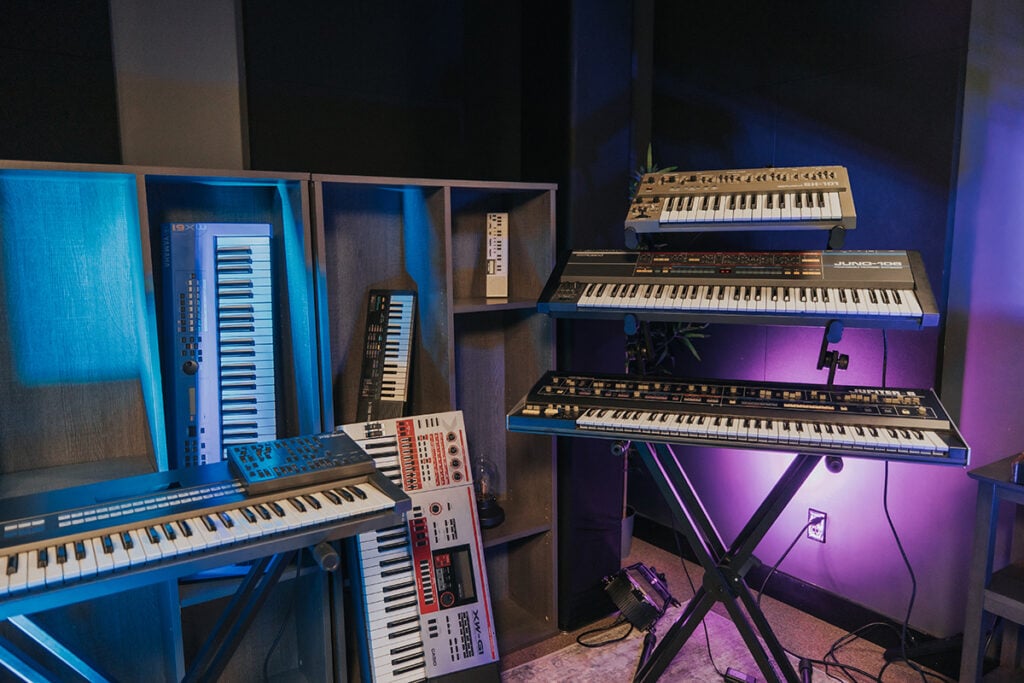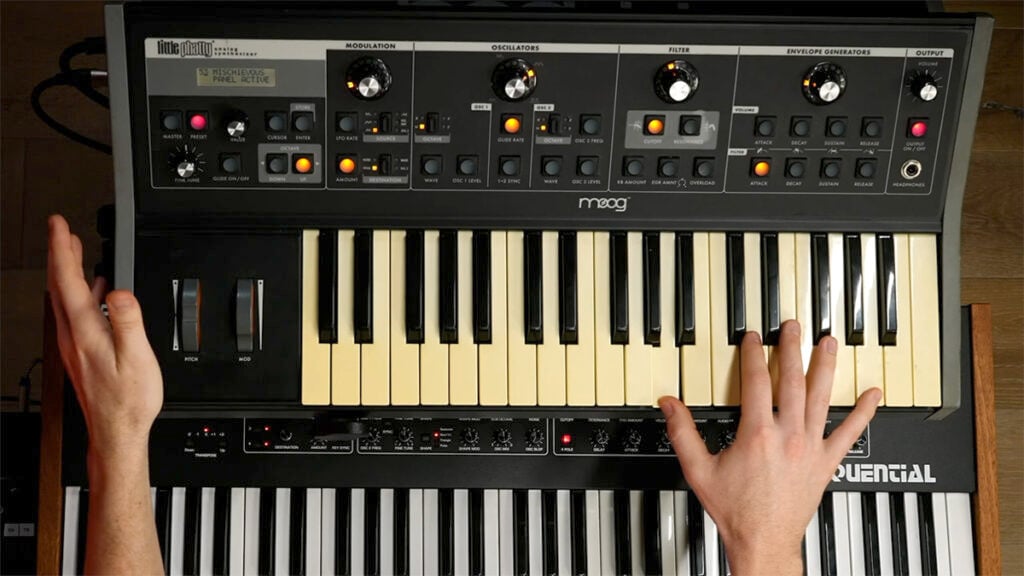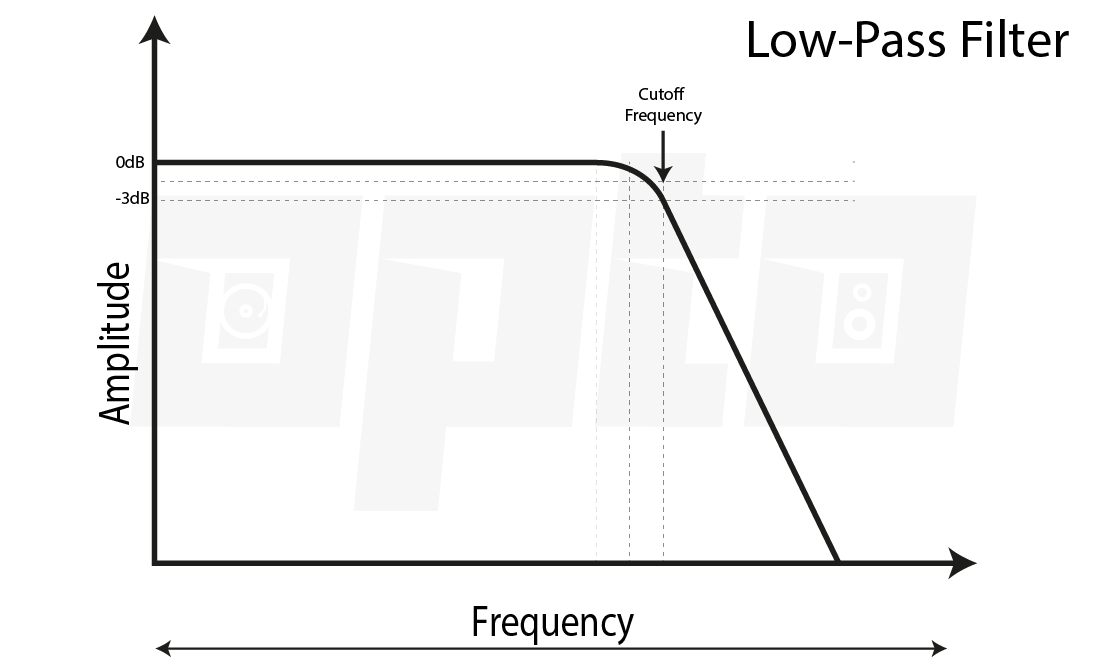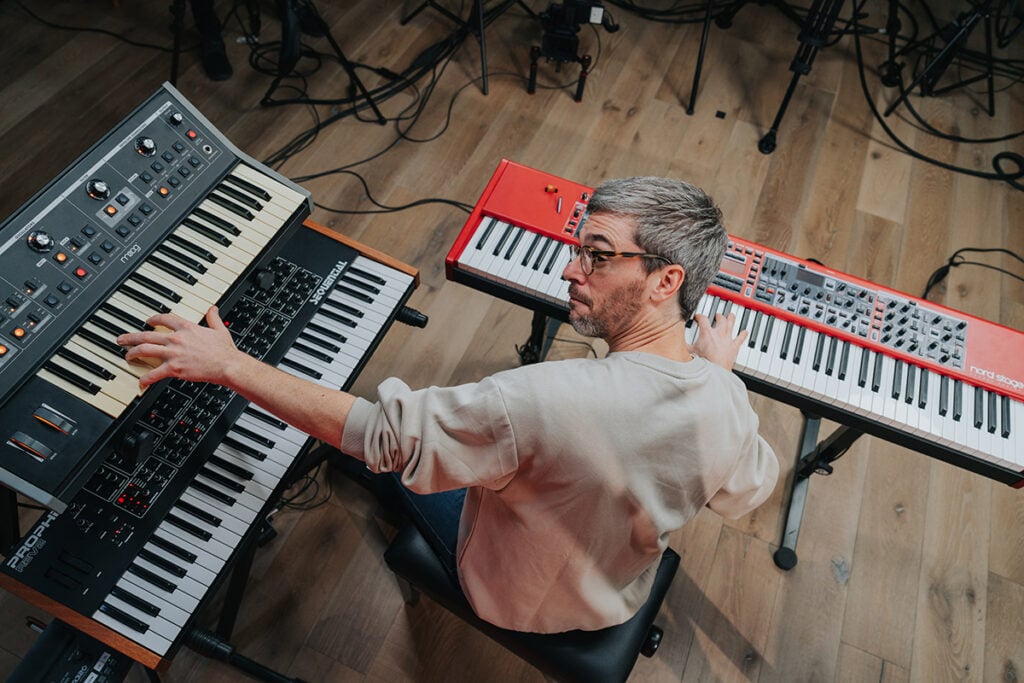Synthesizers are super cool…but they can also be intimidating. These instruments look like a piano, but they often lack a full-size keyboard and instead display a confusing array of buttons, knobs, and switches. But you may have heard about how powerful synthesizers are and how much they’ve done to define modern pop music. And they’re a must-know for anyone who’s interested in music production and composition.
As Justin Stanton of Snarky Puppy says: “We don’t need to have our PhD in knob-turning to use a keyboard.” Here’s an introduction to synthesizer basics to get you started.
Table of Contents:
Get exclusive interviews, fascinating articles, and inspiring lessons delivered straight to your inbox.
A synthesizer is an electronic music instrument that creates sound by generating audio signals. With a synthesizer, you can create any sound you can imagine by customizing elements like its waveform and envelope. Many synthesizers come with a keyboard controller, but some are purely digital software. There are different types of synthesizers, including monophonic versus polyphonic synthesizers, and digital versus analog synthesizers.
The world of synthesizers is vast and this post only provides a general overview, but it’s a fascinating space and we urge you to explore it!

Analog synthesizers generate sound using analog electrical circuits. The waveforms generated by analog synthesizers are continuous.
Digital synthesizers are essentially computers—they generate sound using digital signal processing (DSP).
Analog synthesis is experiencing a resurgence because musicians seem to favor its more organic, more imperfect sound.
Monophonic synthesizers can only play one note at a time; polyphonic synthesizers can handle multiple voices at once. But while monophony may seem like a weakness, monophonic synthesizers are capable of some really cool effects thanks to this very characteristic.
Seeing how a synthesizer is laid out can help you understand how it works. Most synthesizers follow an idiomatic layout: you customize sound parameters going left to right.
Here’s what the Moog Little Phatty looks like:

Synthesis is all about customizing the components of sound to your heart’s desire. To achieve this, understanding the following concepts will help.
Sound is vibration and a waveform is a visual representation of that vibration. Different waveform shapes create different flavors of sound. Here are the three main waveform types you’ll encounter:
Hear the differences here.
The oscillator is what creates sound inside the synthesizer. The oscillator control panel, therefore, is where you’ll craft your waveforms.
The Moog Phatty Justin Stanton demonstrates in our video has two oscillators. This enables you to tune each to a different pitch, thereby playing two notes at once on a monophonic synthesizer.
With two oscillators, you can also further customize your sound. Justin likes combining a square wave and a sawtooth wave.
The envelope section of a synthesizer controls how sound changes over time. You can think of it as controlling the sound’s behavior. It is most commonly used to adjust the amplification of the sound: how loud or soft it grows over time.
An envelope comprises of four elements: attack, delay, sustain, and release (often abbreviated as ADSR).

The Moog Foundation has a useful little chart that explains envelope and the “shape” different ADSR graphs take on depending on the instrument.
The filter section of a synthesizer controls the sound’s timbre. This is the fundamental texture of a sound—it’s what makes a violin sound different from a piano even if they’re playing the same note.
A single note contains the pitch you can identify (eg. “G”) along with frequencies called harmonics that you can’t hear. By filtering out these frequencies, you change the character of the sound (its timbre). Filtering out frequencies like this is called subtractive synthesis.
Low pass filters allow low frequencies to pass and filter out high frequencies. High pass filters are the opposite. You can customize the sound of your filter by adjusting the cutoff.

This oscillator emits a frequency that’s too low for human ears to pick up. However, the oscillating waveform that the L.F.O. creates can be applied to different parameters to create different effects.
With infinite ways to create sound, you’ll be right to ask what happens if you create the perfect sound and want to use it again at your next performance. That’s where patches and presets come in. They allow musicians to save and store sounds.
There is some debate over the terms “patch” and “preset,” and some people use the words interchangeably, but in general:
We hope you enjoyed this introduction to synthesizers! Want more Snarky Puppy content? Here’s some other stuff Justin Stanton has done with us:

Sources and further reading:
The best way to learn piano is with real teachers, but not everyone has the time and money for a private instructor. At Pianote, you can get real feedback from real experts…all from the comfort of your own home. Explore our Method and community yourself with a free 7-day trial.
TRY PIANOTE FOR 7 DAYSPianote is the Ultimate Online Piano Lessons Experience™. Learn at your own pace, get expert lessons from real teachers and world-class pianists, and join a community of supportive piano players. Learn more about becoming a Member.


By signing up you’ll also receive our ongoing free lessons and special offers. Don’t worry, we value your privacy and you can unsubscribe at any time.
We use cookies for traffic data and advertising. Cookie Policy »